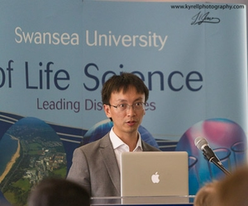Modelling pipeline for subject-specific arterial blood flow
Authors: Igor Sazonov1,Si Yong Yeo1, Rhodri L. T. Bevan1, Xianghua Xie2, Raoul van Loon1, Perumal Nithiarasu1,†,*
DOI: 10.1002/cnm.1446
Abstract:
In this paper, a robust and semi-automatic modelling pipeline for blood flow through subject-specific arterial geometries is presented. The framework developed consists of image segmentation, domain discretization (meshing) and fluid dynamics. All the three subtopics of the pipeline are explained using an example of flow through a severely stenosed human carotid artery. In the Introduction, the state-of-the-art of both image segmentation and meshing is presented in some detail, and wherever possible the advantages and disadvantages of the existing methods are analysed. Followed by this, the deformable model used for image segmentation is presented. This model is based upon a geometrical potential force (GPF), which is a function of the image. Both the GPF calculation and level set determination are explained. Following the image segmentation method, a semi-automatic meshing method used in the present study is explained in full detail. All the relevant techniques required to generate a valid domain discretization are presented. These techniques include generating a valid surface mesh, skeletonization, mesh cropping, boundary layer mesh construction and various mesh cosmetic methods that are essential for generating a high-quality domain discretization. After presenting the mesh generation procedure, how to generate flow boundary conditions for both the inlets and outlets of a geometry is explained in detail. This is followed by a brief note on the flow solver, before studying the blood flow through the carotid artery with a severe stenosis. Copyright © 2011 John Wiley & Sons, Ltd.
